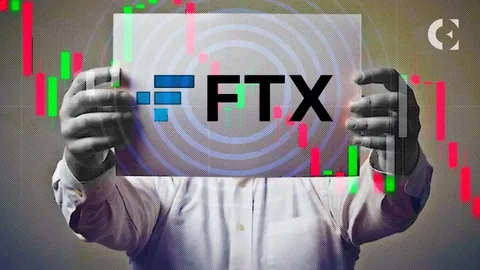Introduction
The dramatic collapse of FTX in late 2022 sent shockwaves through the cryptocurrency world, leaving creditors, clients, and investors scrambling to recover their assets.
This unprecedented event, which shook the confidence of the crypto industry, now centers on the critical task of reimbursement. For creditors and clients, understanding the reimbursement process, key dates, and available options is vital to navigate the path toward asset recovery.
In this blog, we delve deep into the FTX reimbursement process, outlining crucial details for creditors and clients. From the timeline of events to the mechanisms of reimbursement and the latest updates, this guide provides clarity and actionable insights to help you stay informed.

The Fall of FTX: A Recap
FTX’s collapse was one of the most high-profile failures in the cryptocurrency industry. Once hailed as a leading exchange with billions in daily trading volume, it became the epicenter of controversy following revelations of financial mismanagement and questionable practices. The liquidity crisis in November 2022 culminated in the exchange filing for bankruptcy, with an estimated $8 billion in client assets unaccounted for.
For creditors and clients, the fallout presented significant challenges: frozen withdrawals, opaque communication, and uncertainty about reimbursement prospects. The FTX bankruptcy proceedings have since provided a roadmap, albeit complex, for recovering a portion of the lost funds.
Key Dates to Remember in the FTX Reimbursement Process
Understanding the reimbursement process begins with keeping track of important deadlines and developments. Here are the key dates creditors and clients should mark on their calendars:
1. November 2022: Bankruptcy Filing
FTX, along with its affiliates, filed for Chapter 11 bankruptcy in Delaware. This filing initiated the legal process of asset recovery and protection under U.S. law.
2. January 2023: Asset Discovery
Early in 2023, investigators began uncovering and securing FTX’s remaining assets. Over $5 billion in liquid assets, including cash, cryptocurrencies, and securities, were located, providing a glimmer of hope for creditors and clients.
3. July 2023: Creditor Claims Deadline
A significant milestone, the claims filing deadline required creditors to submit their documentation for reimbursement. Missing this deadline could impact one’s ability to receive compensation.
4. October 2024: Distribution Phase Begins
As of October 2024, FTX’s bankruptcy estate is set to start reimbursing approved claims. The exact percentage of reimbursement remains contingent on the valuation and liquidation of remaining assets.
5. Ongoing Updates
Frequent updates from the bankruptcy trustee provide new insights into the reimbursement process. Creditors are advised to monitor these updates closely via official channels.
The Reimbursement Mechanism: What Creditors and Clients Should Know
The reimbursement process for FTX creditors and clients is governed by bankruptcy law and follows a structured framework:
1. Asset Recovery
The first step in the reimbursement process involves locating and securing FTX’s assets. As of the latest reports, over $7 billion has been recovered, including cryptocurrency holdings, cash, and real estate.
2. Claims Assessment
Once assets are secured, the bankruptcy trustee reviews submitted claims to verify their validity. This step ensures that reimbursement is distributed equitably among eligible creditors.
3. Priority Hierarchy
Bankruptcy proceedings prioritize payments in a specific order:
- Administrative costs and legal fees
- Secured creditors
- Unsecured creditors, including retail clients
For FTX clients, this means the reimbursement amount depends on their position within this hierarchy.
4. Partial Distribution
Given the shortfall between liabilities and recovered assets, creditors and clients should expect partial, rather than full, reimbursement. The current estimates suggest recovery rates may range between 30% and 50%.
5. Options for Clients
FTX clients with crypto holdings face an additional consideration: reimbursement in the form of cryptocurrency or fiat currency. This choice could influence the recovery value, given the volatility of crypto markets.
Challenges in the Reimbursement Process
While progress has been made, several challenges remain in the FTX reimbursement process:
1. Global Jurisdiction Issues
FTX operated across multiple jurisdictions, complicating the recovery and liquidation of assets. The involvement of international regulatory bodies has slowed proceedings.
2. Disputed Claims
Some claims have been contested due to incomplete documentation or disputes over account balances. Ensuring the accuracy of these claims requires extensive forensic accounting.
3. Volatile Asset Valuations
A significant portion of FTX’s recovered assets are cryptocurrencies, whose values are subject to market volatility. Fluctuating prices can impact the final reimbursement amounts.
4. Legal Challenges
FTX’s founder, Sam Bankman-Fried, and other executives face ongoing legal proceedings. While separate from the reimbursement process, these cases influence public sentiment and could potentially lead to further asset recoveries.
Insights and Strategies for Creditors and Clients
To maximize the chances of a successful reimbursement, creditors and clients should consider the following strategies:
1. Stay Informed
Monitor official announcements from the bankruptcy trustee, as well as updates from legal representatives. Being proactive about new developments ensures you won’t miss critical deadlines.
2. Engage Legal Counsel
Hiring a legal advisor experienced in bankruptcy law can provide clarity on your claim’s status and the best steps forward.
3. Evaluate Cryptocurrency Options
If given the choice between crypto and fiat reimbursement, weigh the potential risks and rewards. Cryptocurrency may offer higher returns if prices appreciate, but also carries market risk.
4. Collaborate with Advocacy Groups
Joining creditor advocacy groups can amplify your voice in the reimbursement process. These groups often provide collective legal support and share insights that benefit all members.
Conclusion
The FTX reimbursement process is a lengthy and complex journey, but progress is being made toward recovering and distributing assets to creditors and clients.
By staying informed about key dates, understanding the reimbursement mechanisms, and taking proactive steps, you can navigate this challenging process effectively.
What are your thoughts on the FTX reimbursement process? Do you have concerns or insights to share? Let us know in the comments below, and join the conversation to help others in the FTX community.
0 Comments